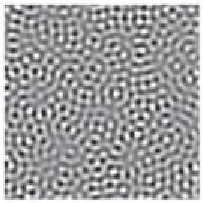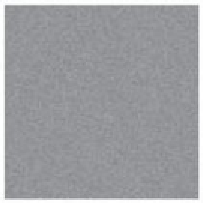Environmental Engineering Reference
In-Depth Information
Figure 5.10. Dynamics described by model (
5.17
) when
a
is negative (
a
=−
0
.
1,
D
=
10,
k
0
=
1). The three panels correspond to
t
equal to 0, 5, and 35 time units, the
field has 128
128 pixels, and periodic boundary conditions are set. The gray-tone
scale spans the interval [10
−
3
×
10
3
]. The initial condition is
,
φ
(
r
,
t
=
0)
=
ξ
u
, where
ξ
u
is a noise uniformly distributed in the interval [10
−
2
10
2
].
,
tend to vanish as the system tends to the homogeneous stable state
φ
=
0. Notice that
the transient pattern exhibits the periodicity of about 2
π/
k
0
pixels imposed by the
spatial coupling (see Appendix B).
Conversely, when
a
is positive no steady states exist and the dynamics of
diverge.
However, even in this case the spatial terms in (
5.17
) are able to induce patterns
that become more and more pronounced (i.e., with stronger spatial gradients) as the
dynamics diverge (see Fig.
5.11
). To stabilize the dynamics to a steady state, it is
necessary to introduce a nonlinear term that hampers the dynamics in diverging.
A relatively simple nonlinear term is
φ
3
; in this case the dynamics turn into the
celebrated Ginzburg-Landau model, with local dynamics expressed as
f
(
−
φ
φ
)
=
a
φ
−
3
,
φ
∂φ
∂
3
2
k
0
)
2
t
=
a
φ
−
φ
−
D
(
∇
+
φ.
(5.18)
−
√
a
,
√
a
] - the diverging effect of the lin-
For small values of
φ
- in the interval [
ear term
a
φ
prevails (with
a
>
0), and as
φ
increases the stabilizing effect of the
Figure 5.11. Example of the dynamics described by deterministic model (
5.17
) when
a
is positive (
a
=+
.
=
10,
k
0
=
1). The three panels correspond to
t
equal to
0, 30, and 60 time units, and the gray-tone scale spans the interval [
0
1,
D
−
.
,
.
0
1
0
1]. The
other conditions are as in Fig.
5.10
.









Search WWH ::

Custom Search